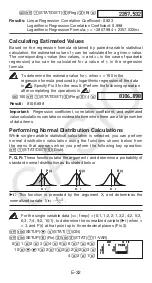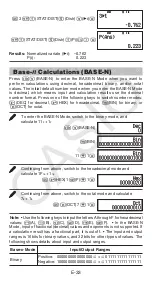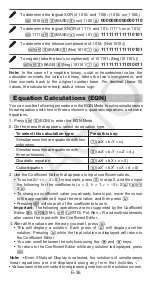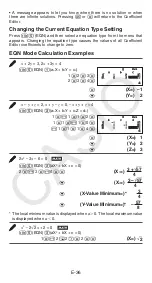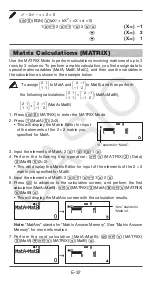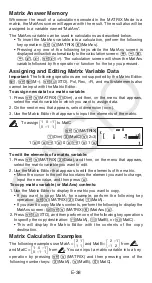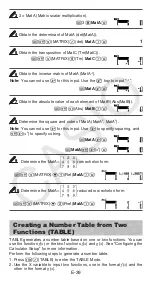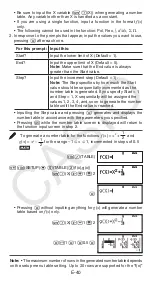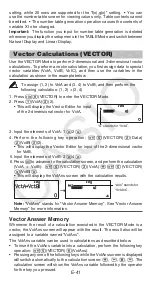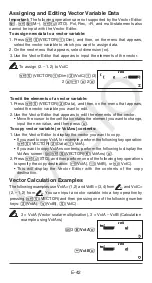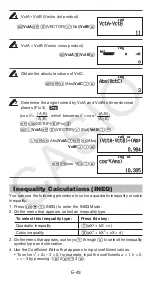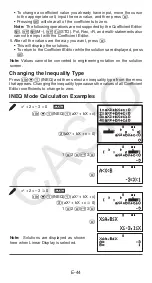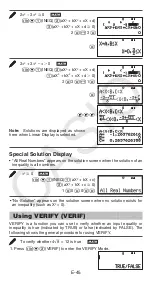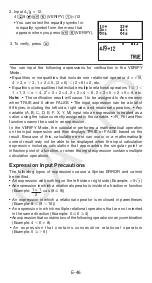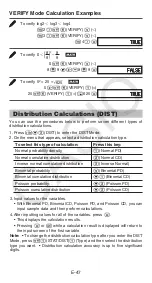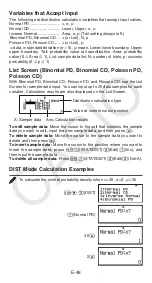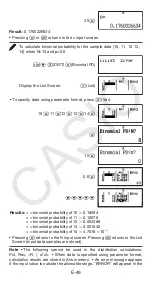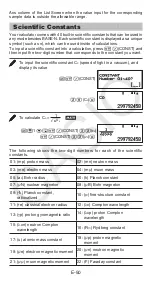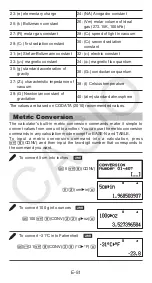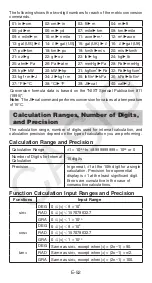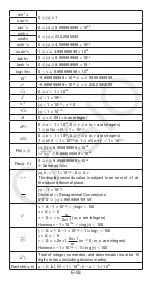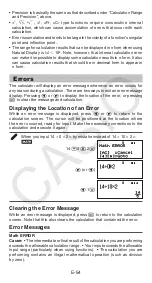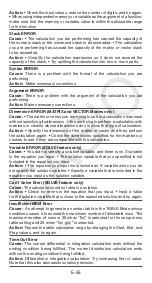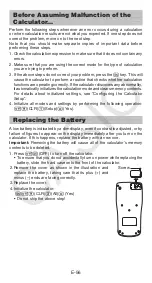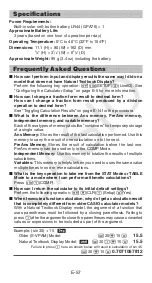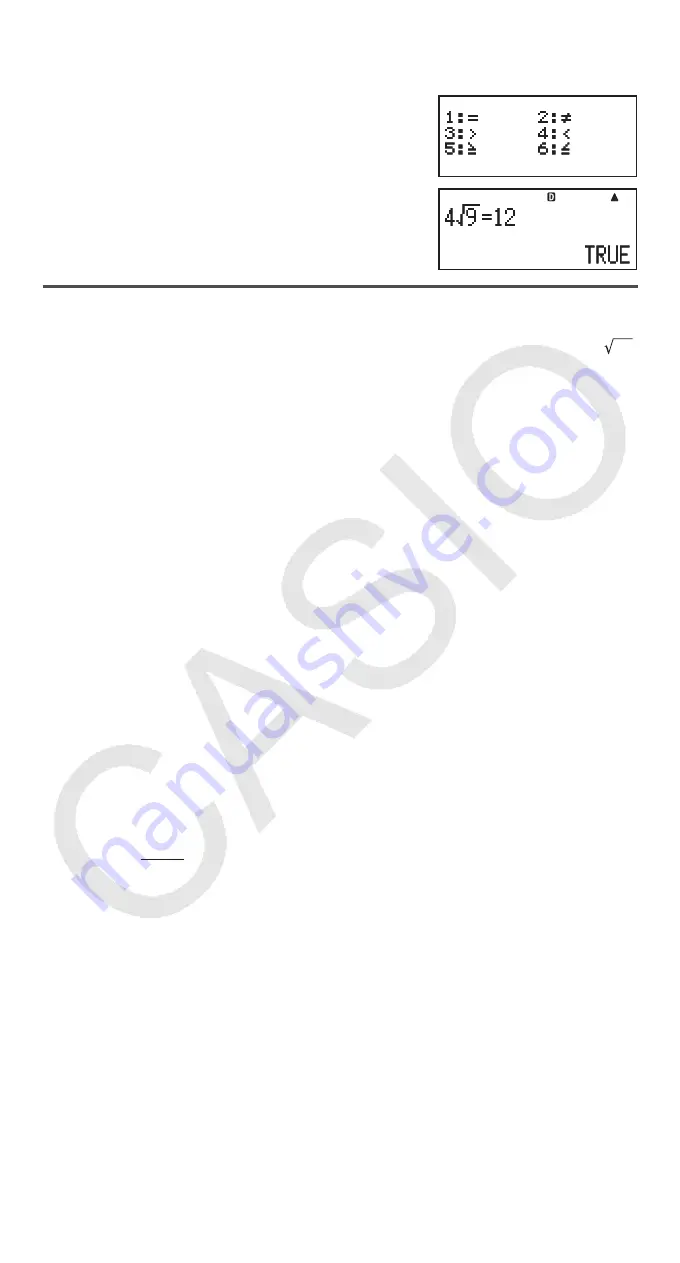
E-46
2. Input 4
'
9 = 12.
4
!
9
e
1
6
(VERIFY)
1
(=)12
• You can select the equality symbol or
inequality symbol from the menu that
appears when you press
1
6
(VERIFY).
3. To verify, press
=
.
You can input the following expressions for verification in the VERIFY
Mode.
• Equalities or inequalities that include one relational operator 4 = 16,
4
3,
π
3, 1 + 2
5, (3 × 6)
(2 + 6) × 2, etc.
• Equalities or inequalities that include multiple relational operators 1
1
1 + 1, 3
π
4, 2
2
= 2 + 2 = 4, 2 + 2 = 4
6, 2 + 3 = 5
2 + 5 = 8, etc.
Note:
• The verification result will cause 1 to be assigned to Ans memory
when TRUE and 0 when FALSE. • The input expression can be a total of
99 bytes, including the left side, right side, and relational operators. • Any
variable (A, B, C, D, E, F, X, Y, M) input into an expression is treated as a
value, using the value currently assigned to the variable. • ÷R, Pol and Rec
functions cannot be used in an expression.
In the VERIFY Mode, the calculator performs a mathematical operation
on the input expression and then displays TRUE or FALSE based on the
result. Because of this, calculation error can occur or a mathematically
correct result may not be able to be displayed when the input calculation
expression includes calculation that approaches the singular point or
inflection point of a function, or when the input expression contains multiple
calculation operations.
Expression Input Precautions
The following types of expressions cause a Syntax ERROR and cannot
be verified.
• An expression with nothing on the left side or right side (Example: = 5
'
7 )
• An expression in which a relational operator is inside of a fraction or function
(Example: 1 = 1
2
, cos (8
9))
• An expression in which a relational operator is enclosed in parentheses
(Example: 8
(9
10))
• An expression in which multiple relational operators that are not oriented
in the same direction (Example: 5
6
4)
• An expression that contains two of the following operators in any combination
(Example: 4
6
8)
• An expression that contains consecutive relational operators
(Example: 5
9)
Math
Math

